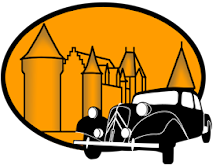Scientific Name: Morchella esculenta (Morchellaceae). 'Morchella' means 'mushroom'; 'esculenta' means 'edible'.
English Name: Morel; Common Morel; Yellow Morel.
French Name: La Morille comestible (='edible morel').
5 Key Characters:
- caps 3 - 8 cm across and 5 - 12 cm tall, conical, globular or ovoid.
- flesh is waxy.
- caps have a sort of irregular honeycomb or cellular appearance.
- caps ivory, yellow ochre or light brown.
- stems ivory.
Lookalikes: Old specimens of Common Stinkhorn Phallus impudicus, which have had their stinky green goo eaten by flies to reveal the honeycomb structure below, but this species is usually fruiting later in the year. False Morel Gyromitra esculenta, which despite its name can be fatally toxic. The cap looks more like a brain than honeycomb and is red brown. This species is associated with pine forests on sandy soil. Black Morel Morchella elata, which has a darker more conical cap with honeycomb cells more regularly lined up in columns. White Saddle Helvella crispa, which has a fluted, broader stem, and a contorted but not cellular cap.
Habitat: Deciduous woodland on chalk soil, gardens.
Fruiting Period: March-April-May-June.
Status: Uncommon.
Edible or Toxic: Highly desirable as an edible mushroom, but they must be cooked before being consumed. The raw mushroom will make you sick and give you stomach pains. Usually dried before consumption by foragers.
Photographed by Loire Valley Nature:







No comments:
Post a Comment